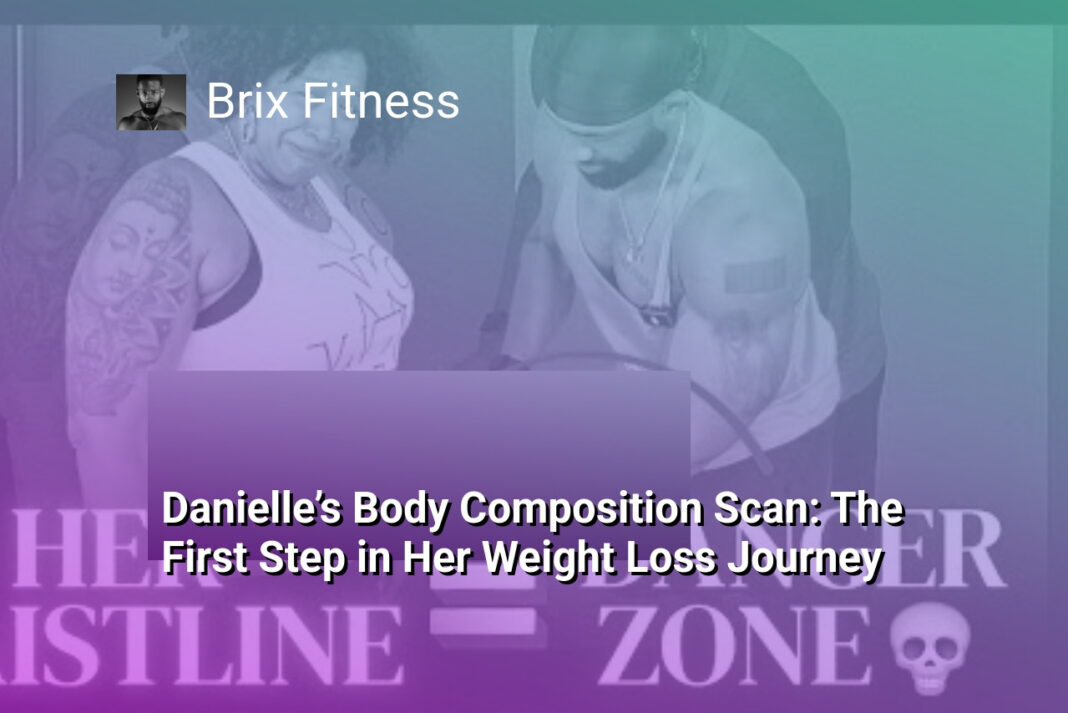The Bottom Line:
- I discovered that love handles are challenging fat deposits that significantly impact body appearance, requiring a nuanced approach to management.
- Extreme dieting and intensive cardio are counterproductive, as sustainable lifestyle modifications are more effective for long-term fat reduction.
- Tracking nutritional intake through a metabolic audit is essential, as perceived healthy eating doesn’t automatically create a calorie deficit.
- Full-body weight training and increased daily activity are more beneficial than targeted spot-reduction exercises for addressing stubborn fat areas.
- Developing a flexible, multi-level strategy that allows adaptation during stressful periods is crucial for maintaining consistent progress and avoiding complete regression.
The Truth About Love Handle Formation
The Biological Mechanisms Behind Fat Accumulation
Love handles emerge from a complex interplay of hormonal, genetic, and lifestyle factors. Insulin resistance and elevated cortisol levels significantly contribute to fat storage around the waistline. When the body experiences chronic stress, cortisol triggers increased fat deposition specifically in abdominal regions, making love handles more pronounced. Testosterone and estrogen levels also play critical roles in determining fat distribution, with hormonal imbalances potentially accelerating love handle formation.
Metabolic Influences on Waistline Fat
Metabolic dysfunction represents a primary driver of love handle development. Sedentary lifestyles combined with high-calorie, processed food consumption create an environment where fat cells proliferate around the midsection. Insulin sensitivity decreases with reduced physical activity, causing the body to store more energy as visceral and subcutaneous fat. Additionally, metabolic adaptations resulting from prolonged poor dietary habits can make fat loss increasingly challenging, creating a cyclical pattern of weight gain around the waistline.
Genetic and Environmental Predispositions
While individual lifestyle choices significantly impact love handle formation, genetic predispositions cannot be overlooked. Some individuals possess genetic variations that make them more susceptible to storing fat in specific body regions. Environmental factors such as sleep quality, stress management, and overall physical activity levels interact with genetic tendencies to determine fat distribution. Understanding these underlying mechanisms reveals why some people struggle more intensely with love handle reduction despite implementing standard diet and exercise protocols.
Critical Mistakes Preventing Fat Loss Success
Metabolic Misconceptions and Nutritional Blind Spots
Many individuals struggling with love handles unknowingly sabotage their fat loss efforts through fundamental metabolic misunderstandings. Most people dramatically underestimate their actual caloric intake, often consuming 30-40% more calories than they believe. This nutritional miscalculation creates an invisible barrier preventing meaningful fat reduction. Precise food tracking using digital tools or professional nutrition apps becomes critical in understanding true energy consumption and creating an accurate calorie deficit.
Training Approach Pitfalls
Traditional fat loss strategies frequently involve excessive cardio and low-intensity exercises that compromise metabolic health. These approaches typically lead to muscle degradation and metabolic adaptation, where the body becomes more efficient at storing fat. Instead, prioritizing resistance training with progressive overload stimulates muscle preservation and increases resting metabolic rate. Incorporating compound movements like squats, deadlifts, and bench presses triggers hormonal responses that optimize fat oxidation and support lean muscle development.
Psychological Barriers to Sustainable Fat Loss
The psychological dimension of fat loss is often overlooked, yet it represents a critical component of long-term success. Many individuals develop self-defeating narratives around their body composition, creating mental blocks that prevent meaningful progress. Developing a growth mindset that views body transformation as a gradual, iterative process rather than an all-or-nothing endeavor is essential. Implementing flexible strategies that allow for occasional deviations while maintaining overall nutritional discipline can prevent complete derailment of fat loss goals. Recognizing that minor setbacks are part of the journey, not permanent failures, helps maintain motivation and psychological resilience throughout the transformation process.
Strategic Workout Approaches for Body Recomposition
Resistance Training for Metabolic Enhancement
Effective body recomposition requires a strategic approach to resistance training that prioritizes muscle preservation and metabolic stimulation. Compound movements like squats, deadlifts, and bench presses engage multiple muscle groups simultaneously, creating a higher metabolic demand and promoting hormonal responses that support fat loss. By progressively overloading these exercises, individuals can stimulate muscle protein synthesis while simultaneously creating a caloric deficit that targets stubborn fat deposits around the midsection.
High-Intensity Interval Training (HIIT) Protocols
HIIT represents a powerful methodology for accelerating fat loss without sacrificing muscle mass. These short, intense training sessions trigger significant metabolic adaptations, increasing post-exercise oxygen consumption and enhancing insulin sensitivity. Structured HIIT workouts should incorporate a mix of strength and cardiovascular elements, such as kettlebell swings, burpees, and sprint intervals. The key is maintaining high-intensity work periods of 20-40 seconds followed by strategic recovery intervals, which helps optimize fat oxidation and preserve lean muscle tissue.
Periodization and Progressive Overload
Sustainable body recomposition demands a systematic approach to training progression. Implementing periodization techniques allows for continuous adaptation by strategically varying training volume, intensity, and exercise selection. This approach prevents plateaus and maintains metabolic flexibility. Lifters should aim to incrementally increase training stress through methods like adding weight, increasing repetitions, or reducing rest periods. By creating a structured progression model, individuals can consistently challenge their physiological limits while minimizing the risk of overtraining or muscular adaptation stagnation.
Nutrition and Metabolic Optimization Techniques
Strategic Macronutrient Manipulation
Optimizing nutritional intake requires a precise approach to macronutrient balance. Protein plays a critical role in metabolic enhancement, with research indicating that consuming 1.6-2.2 grams per kilogram of body weight can significantly boost metabolic rate and preserve lean muscle mass during fat loss. Strategic carbohydrate cycling can further amplify fat loss by manipulating insulin sensitivity and metabolic flexibility. This involves alternating between higher and lower carbohydrate intake days, which prevents metabolic adaptation and keeps the body’s fat-burning mechanisms responsive.
Metabolic Signaling and Hormonal Optimization
Hormonal balance is crucial in targeting stubborn fat deposits like love handles. Insulin management becomes paramount, with techniques such as time-restricted eating and strategic nutrient timing playing significant roles. Implementing intermittent fasting protocols can improve insulin sensitivity, reduce inflammation, and enhance growth hormone production. Additionally, incorporating specific micronutrients like chromium, magnesium, and omega-3 fatty acids can support metabolic efficiency and help regulate hormonal responses that contribute to fat storage.
Nutritional Periodization and Metabolic Adaptation
Preventing metabolic plateaus requires a dynamic nutritional approach. Implementing periodic diet breaks and controlled refeed days can help reset metabolic adaptations and prevent the body from entering a prolonged catabolic state. By strategically increasing caloric intake at specific intervals, individuals can maintain metabolic flexibility and prevent the down-regulation of key fat-burning hormones like leptin. This approach not only supports sustained fat loss but also helps maintain muscle mass and overall metabolic health, making it a superior alternative to traditional linear dieting strategies.
Building Long-Term Fitness Consistency
Creating a Sustainable Fitness Framework
Achieving lasting fat loss requires more than temporary motivation; it demands a strategic approach that integrates seamlessly into your lifestyle. The most successful fitness journeys are built on adaptable systems that accommodate life’s unpredictable nature. By developing a flexible framework, you can maintain progress even during challenging periods, preventing complete derailment of your health goals.
Psychological Resilience in Fitness Progression
Mental fortitude plays a crucial role in long-term fitness consistency. Instead of viewing fitness as an all-or-nothing endeavor, embrace a graduated approach that allows for varying levels of engagement. During high-stress periods, shift from an optimal execution plan to a maintenance mode that preserves your foundational fitness habits. This approach prevents complete disengagement and ensures you’re always making some form of progress, no matter how minimal.
Strategic Habit Development and Adaptation
Developing robust fitness habits requires understanding your personal triggers and creating systems that work around potential obstacles. Implement a multi-tiered strategy that includes an optimal performance level, a sustainable consistency level, and a bare minimum maintenance mode. This approach allows you to dynamically adjust your fitness routine based on current life circumstances without experiencing complete burnout or regression.
By prioritizing adaptability over perfection, you create a fitness strategy that can withstand life’s complexities. The goal is not to maintain peak performance constantly but to establish a baseline of consistent movement, nutrition, and health-conscious decision-making. This method ensures that even during challenging weeks, you’re maintaining some level of physical activity and nutritional awareness, preventing complete disengagement from your fitness goals.
Tracking your progress becomes essential in this approach. Use tools like fitness apps, progress photos, or simple measurement techniques to maintain accountability. Remember that minor setbacks are part of the journey, and the key is to quickly realign with your core fitness objectives rather than allowing temporary challenges to completely derail your long-term progress.





